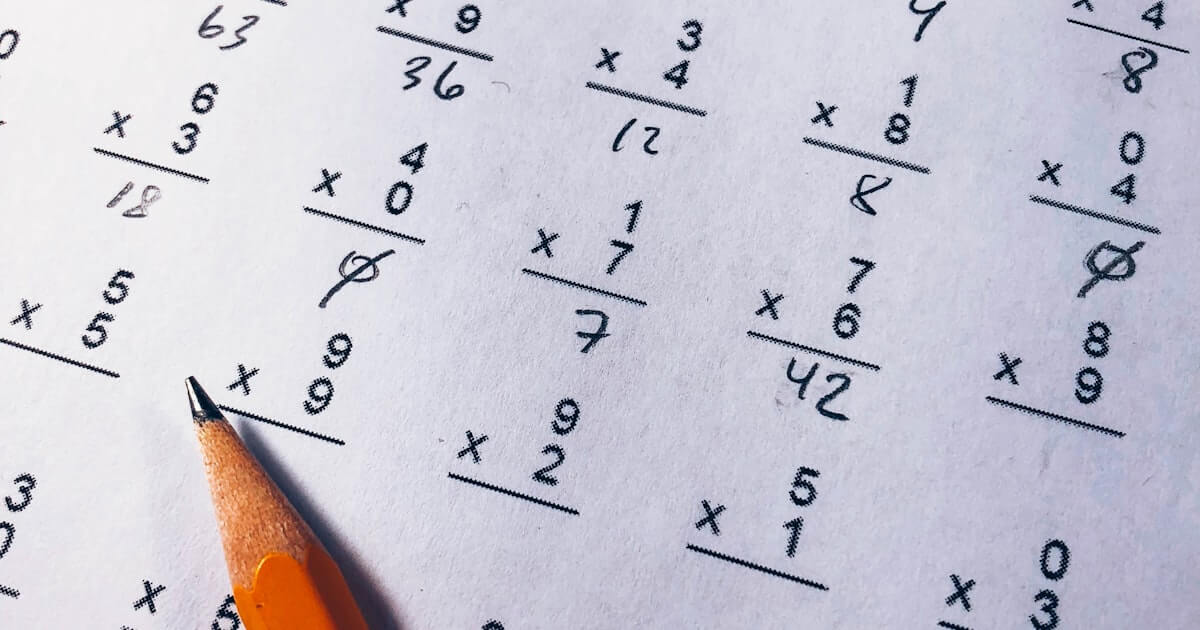If your child or students need a little extra math practice for math problems taught in New York or elsewhere, try out ForOurSchool.org‘s free math games. These math games are the same ones used in its Math-A-Thon platform and are based on the New York State Next Generation Learning Standards. Free math games are currently available for pre-kindergarten, kindergarten, 1st grade, 2nd grade, 3rd grade, 4th grade, and 5th grade.
Pre-Kindergarten Math Curriculum
The New York State pre-kindergarten math curriculum is mostly focused on counting. By the end of pre-kindergarten, students should be able to count to 20 and represent up to 5 objects as a written number.
Kindergarten Math Curriculum
The New York State kindergarten math curriculum expands on the counting learned in pre-kindergarten and introduces addition and subtraction. By the end of kindergarten, students will have learned to count to 100 starting from any number, skip count to 100 by 10s, represent up to 20 objects as a written number, and compare groups of objects. They will also begin to learn simple addition and subtraction with objects, numbers, and word problems.
TRY IT! Addition with the sum total of 5 or less
1st Grade Math Curriculum
The New York State 1st grade math curriculum incorporates the addition and subtraction learned in kindergarten into word problems. The word problems may also call for the addition of 3 whole numbers with a sum of 20 or less. Skip counting is expanded upon to skip by single digit numbers. In addition, by the end of 1st grade, students will have learned to determine the unknown number in an addition or subtraction equation, count to 120 starting at any number, identify the tens and ones values in two-digit numbers, and compare two-digit numbers.
TRY IT! Subtraction word problem with the largest number being 10 or less
2nd Grade Math Curriculum
The New York State 2nd grade math curriculum greatly expands on the types and depth of math problems that students saw in 1st grade. By the end of 2nd grade, students should be able to solve one- and two-step word problems using addition and subtraction within 100; fluently add and subtract within 20 using mental strategies; identify if a group of objects has an odd or even number of members; identify the hundreds, tens, and ones values in three-digit numbers; count within 1,000 and skip count by 5s, 10s, and 100s; add up to 4 two-digit numbers; measure the length of objects using units of inches, feet, centimeters, and meters; tell time in 5-minute increments; count coins whose sum is one dollar or less; and classify two-dimensional figures as polygons or non-polygons.
TRY IT! Counting money up to 1 dollar
3rd Grade Math Curriculum
The New York State 3rd grade math curriculum introduces multiplication and division in equations, missing number problems, and word problems within 100! By the end of 3rd grade, students will have learned to identify patterns in the addition and multiplication tables; round whole numbers to the nearest 10 or 100; multiply one-digit numbers by multiples of 10 in the range of 10-90; identify the thousands, hundreds, tens, and ones values in four-digit numbers; understand fractions and represent them on a number line as well as compare them by reasoning their size; tell time to the nearest minute; measure and estimate liquid volumes and masses of objects using grams, kilograms, and liters; measuring lengths using a ruler and area by counting squares; classify polygons based on number of sides and vertices; and partition shapes into parts with equal areas.
TRY IT! Tell time to the quarter hour on an analog clock
4th Grade Math Curriculum
The New York State 4th grade math curriculum takes the multiplication and division learned in 3rd grade and introduces letters to stand for the unknown quantity (hello algebra!). By the end of 4th grade, students are expected to be able to solve multistep word problems using the four operations and be able to estimate solutions mentally; identify factor pairs for whole numbers less than or equal to 100; recognize that in multi-digit numbers a digit in one place represents ten times what it represents in the place to its right; compare, round, and identify the digit place values in multi-digit numbers up to 1,000,000; multiple one-digit numbers by four-digit numbers and, conversely, divide four-digit numbers by one-digit numbers; compare and reduce fractions and solve addition, subtraction, multiplication, and division word problems involving fractions; compare lengths of different units; solve word problems that incorporate distance, time, volumes, masses, and money; generate line plots; measure angles using a protractor; and recognize angle measurements as additive;
TRY IT! Order of operations involving 3 numbers within 200
5th Grade Math Curriculum
In the final year of elementary school, New York State 5th grade math curriculum expands order of operations problems to incorporate parentheticals. By the conclusion of 5th grade, students are also expected to recognize that in multi-digit numbers a digit in one place represents one-tenth of what it represents in the place to its left; read, write, and compare decimals to thousandths and round decimals to any place; fluently multiply multi-digit numbers; identify quotients of numbers with up to 4-digit dividends and 2-digit divisors; add, subtract, multiply, and divide fractions with unlike denominators which may be incorporated in word problems; convert measurement units when conversion factor may or may not be given; calculate the volume of 3-dimensional objects; and graph and compare lines on a 2-dimensional coordinate system.


Leave a Reply